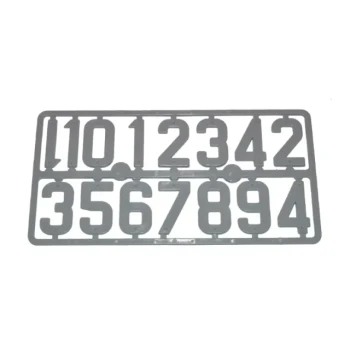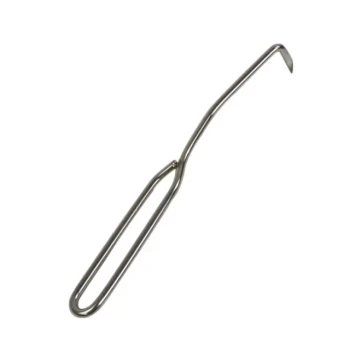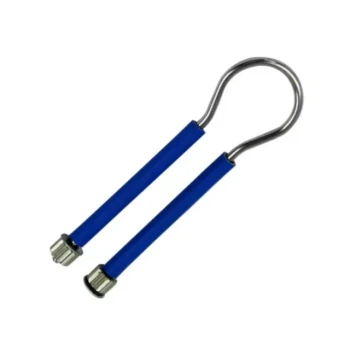Proper hive ventilation is one of the most critical factors in maintaining a healthy, productive honey bee colony throughout the year. It's a system for managing both temperature and, more importantly, moisture. Your seasonal adjustments should focus on preventing summer overheating while ensuring the colony stays dry during the winter.
The central challenge of hive ventilation is not keeping bees warm, but keeping them dry. While bees can generate their own heat, they cannot effectively combat the chilling effects of condensation, making moisture management the primary goal, especially in winter.
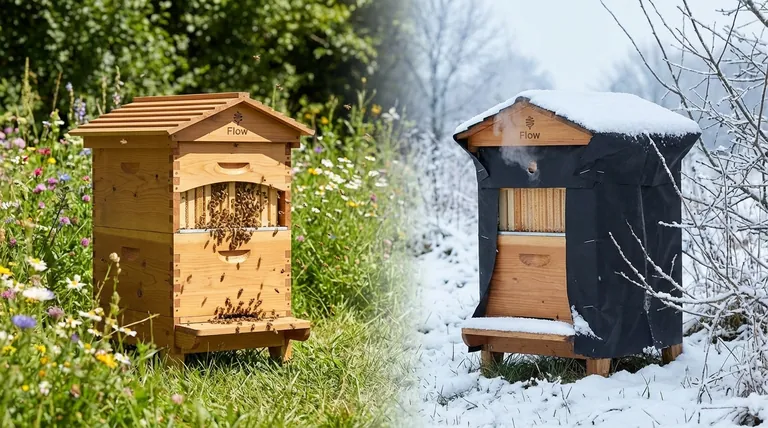
The Dual Role of Hive Ventilation
Effective ventilation serves two distinct but related purposes within the hive. Understanding both is key to making the right management decisions.
### Regulating Internal Temperature
Bees work constantly to maintain a stable temperature, especially in the brood nest (around 95°F or 35°C). Ventilation helps them do this more efficiently.
In the summer, open ventilation allows excess heat to escape, preventing the colony from overheating and reducing the energy spent on fanning and "bearding" at the entrance.
In winter, the goal shifts. While some heat retention is beneficial, the primary thermal benefit of proper ventilation is preventing cold, damp conditions from forming.
### Managing Lethal Moisture
As bees consume honey, they release a significant amount of water vapor through respiration. In a cool hive, this warm, moist air rises and condenses on cold inner surfaces, just like steam on a bathroom mirror.
This condensation can drip down onto the winter cluster, chilling the bees. Wet bees die quickly, even if the ambient temperature isn't lethal.
Proper ventilation creates a path for this moisture-laden air to exit the hive before it can condense and cause harm.
A Seasonal Ventilation Strategy
Your approach must adapt to the primary challenge of each season: heat in the summer and moisture in the winter.
### Summer: Maximizing Airflow
During hot weather, the colony's main struggle is cooling the hive. Your goal is to facilitate as much natural airflow as possible.
This can be achieved by providing an upper entrance or ventilation hole, propping the outer cover slightly, or using a screened inner cover. This allows hot air to rise and escape, creating a natural chimney effect.
### Winter: Prioritizing Moisture Escape
In winter, your primary enemy is moisture, not cold. The colony forms a tight winter cluster and generates its own heat by vibrating their wing muscles.
A small upper entrance or ventilation port is crucial. This opening allows the warm, moist air produced by the cluster to exit the hive before it can condense on the cold inner cover and rain back down on the bees.
Wrapping the hive in black tar paper can supplement this strategy. It does not "insulate" the hive in the traditional sense but absorbs solar radiation, warming the hive walls just enough to help dry out the interior and allow the bees to more easily reach nearby food stores on sunny days.
### Managing External Blockages
Regardless of the season, the hive entrances must remain clear.
Promptly removing heavy snow from hive entrances is essential. A blocked entrance prevents dead bees from being removed and, more critically, cuts off the oxygen supply and traps moisture and carbon dioxide.
Common Pitfalls to Avoid
Misunderstanding the physics of a beehive can lead to well-intentioned but fatal management mistakes.
### The Fallacy of a "Warm" Hive
Beekeepers often try to make a hive airtight for winter, believing they are helping the bees stay warm. This is a critical error.
A sealed hive traps moisture, creating a damp, cold environment that is far more dangerous than a dry, drafty one. A little heat loss through an upper vent is a small price to pay for a dry cluster.
### Misunderstanding the Draft
A gentle, upward flow of air that removes moisture is beneficial. A strong cross-draft that blows directly on the cluster is harmful.
This is why a small upper entrance is preferred over a wide-open bottom entrance in winter. The upper vent allows moisture to escape without creating a chilling wind tunnel through the heart of the cluster.
Making the Right Choice for Your Climate
Your specific actions should be tailored to your local environmental conditions and the needs of your colony.
- If your primary focus is surviving hot, long summers: Prioritize maximum cross-flow ventilation with screened bottom boards and upper entrances to prevent hive stress.
- If your primary focus is navigating cold, damp winters: Ensure a small, clear upper entrance for moisture to escape, and consider wrapping the hive to gain the benefit of solar radiation.
- If you live in a moderate, temperate climate: A year-round upper entrance often provides an ideal balance, offering heat relief in the summer and essential moisture control in the winter.
Ultimately, managing ventilation is about creating a stable, dry internal environment that allows your bees to thrive.
Summary Table:
| Season | Primary Goal | Key Ventilation Action |
|---|---|---|
| Summer | Prevent Overheating | Maximize airflow with upper entrances or screened inner covers. |
| Winter | Remove Moisture | Ensure a small, clear upper entrance for moisture to escape. |
| Year-Round | Clear Entrances | Regularly remove snow, debris, or dead bees from hive entrances. |
Ensure your apiary's success with the right equipment. Proper ventilation is just one part of a healthy hive. HONESTBEE supplies durable, high-quality beekeeping supplies and equipment designed for the demands of commercial apiaries and distributors. From screened inner covers to essential hive components, our wholesale-focused operations provide the reliable gear you need to support colony health year-round.
Contact HONESTBEE today to discuss your wholesale needs and equip your operation for productivity and resilience.
Visual Guide
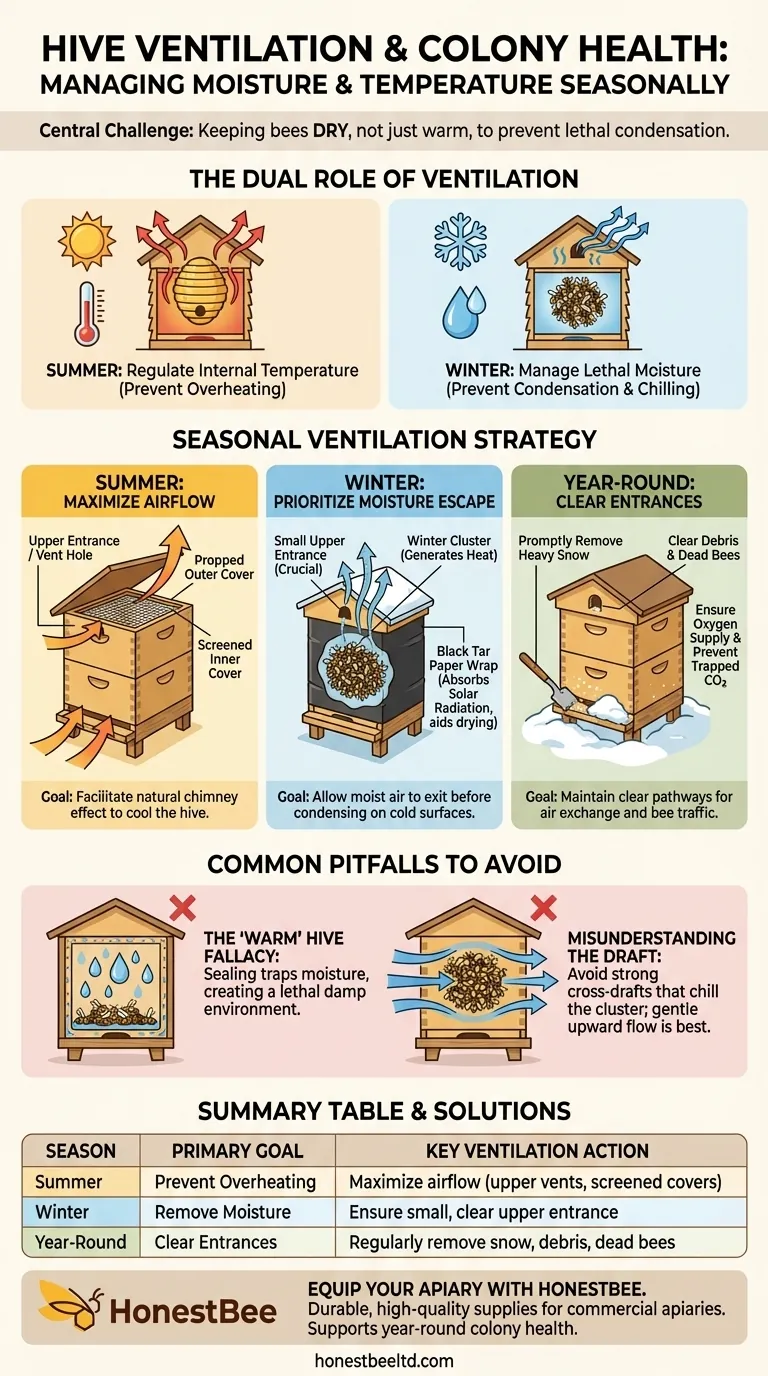
Related Products
- Honey Flow Garden Bee Hive Flow Hive Best Beehive for Beginners
- Wholesales Dadant Size Wooden Bee Hives for Beekeeping
- Automatic Honey Flow Beehive 4 Frame Mini Hive for Beekeeping
- HONESTBEE Professional Long Handled Hive Tool with Precision Cutting Blade
- Long Langstroth Style Horizontal Top Bar Hive for Wholesale
People Also Ask
- What are the benefits of the Flow Hive for novice beekeepers? Simplify Honey Harvesting & Reduce Stress
- How does honey production differ between Flow Hives and Langstroth hives? Choose the Right System for Your Apiary
- What makes polyurethane foam environmentally friendly? The Surprising Benefits of a Durable, Inert Material
- What is the best beehive for beginners? Choose the Right Hive for Your Beekeeping Goals
- How does the Flow Hive reduce stress on bees during honey extraction? A Guide to Gentle Harvesting














